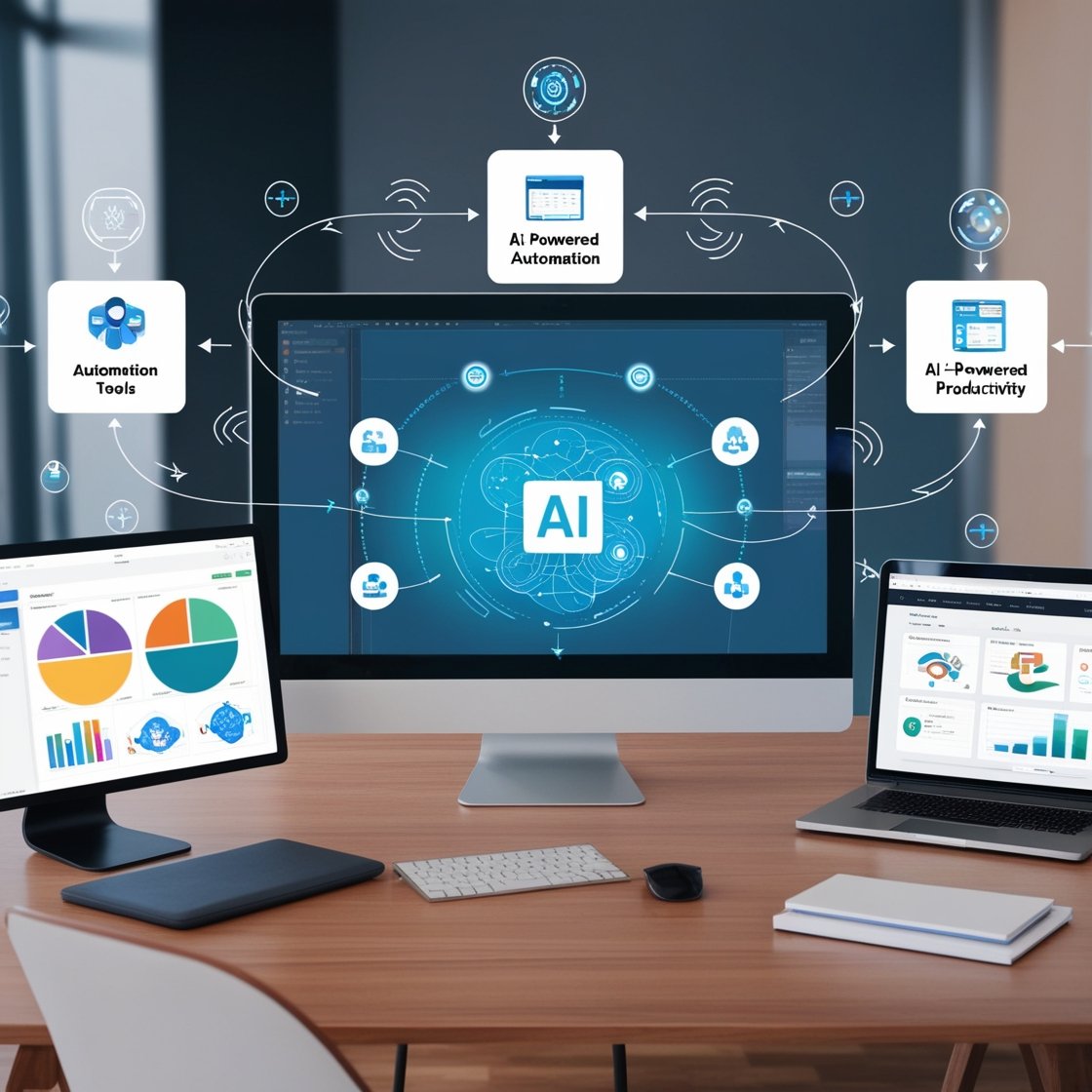Introduction
In today’s fast-paced digital world, efficiency and productivity are paramount. Artificial intelligence (AI) has emerged as a game-changer in automating repetitive tasks and streamlining workflows across various sectors. From small businesses to large corporations, AI is reshaping how we approach daily operations. This guide explores ways to leverage AI to automate your workflow, ultimately enhancing productivity.
Why Use AI to Automate Workflows?
AI brings several key advantages that make it an excellent tool for automating workflows:
Time-saving: AI-powered automation reduces the time spent on repetitive tasks, allowing you to focus on strategic initiatives.
Consistency and Accuracy: AI processes tasks with minimal human error, providing consistent and accurate results.
Scalability: AI solutions can handle large volumes of tasks, making them ideal for scaling business operations.
Types of AI Automation Tools
AI tools are versatile, covering a range of applications designed to address various automation needs:
1. Task Management Tools
AI-driven task management tools, like Trello and Asana, use machine learning algorithms to suggest task priorities, track progress, and identify potential bottlenecks. Automation in task management reduces the manual labor of updating project statuses and keeping teams informed.
2. Communication and Customer Support Bots
AI chatbots, such as Intercom and Zendesk, can automate responses to common customer inquiries, freeing up human agents to handle complex issues. They use Natural Language Processing (NLP) to understand and respond in real-time, making customer support more efficient.
3. Scheduling and Calendar Management
Tools like x.ai and Google Calendar’s AI capabilities automate meeting scheduling by suggesting ideal times based on availability and previous preferences. This eliminates the back-and-forth communication often required to arrange meetings.
4. Data Analysis and Reporting Tools
Automated AI tools like Tableau and Power BI use machine learning algorithms to interpret and visualize data. By automating data analysis, you receive insights without manual input, making the process faster and more accurate.
5. Marketing Automation Tools
Tools such as HubSpot and Mailchimp enable automated email marketing campaigns. They segment your audience and personalize messages based on user behavior, ensuring that your campaigns reach the right people at the right time.
Step-by-Step Guide to Automating Workflows with AI
Step 1: Identify Repetitive Tasks for Automation
List out the tasks that you perform daily or weekly, particularly those that are repetitive and time-consuming. Common areas include:
Data Entry: Collecting and storing data from multiple sources.
Social Media Management: Posting, monitoring, and engaging with followers.
Email Responses: Sending common replies to customer inquiries.
Step 2: Choose the Right AI Tools for Your Needs
Evaluate different AI tools based on your specific workflow needs. Consider user-friendliness, integration capabilities with your current software stack, and cost. A few examples:
Customer Support Automation: Drift and other chatbots are used to answer consumer questions.
Content Creation Automation: AI writing tools like Jasper for generating blog posts and social media content.
Workflow Management Automation: Use Zapier to integrate different apps and set up automated actions.
Step 3: Integrate AI into Your Workflow
Once you’ve selected the tools, it’s time to integrate them into your existing workflow:
Automation Platforms: Use platforms like Zapier or Microsoft Power Automate to connect your applications and create “if-this-then-that” (IFTTT) sequences.
Customizable Triggers: Set up triggers that prompt AI actions based on specific criteria. For example, an automated email response could be triggered when a customer submits an inquiry form on your website.
Data Syncing: AI tools can synchronize data between various platforms (e.g., syncing customer data between CRM and email marketing tools).
Step 4: Monitor and Optimize
To ensure that the automation runs smoothly, monitor the workflow periodically:
Performance Metrics: Evaluate metrics such as response time, customer satisfaction, and task completion rate to gauge the efficiency of the automation.
Refinement: Fine-tune your settings, rules, and sequences based on performance data to further optimize the workflow.
Step 5: Scale Up
Once you’ve tested your automated workflows successfully, consider scaling up by adding more complex AI tools or automating additional tasks. For example:
Use AI to forecast sales trends and help with decision-making in marketing.
Leverage AI-driven analytics to segment and personalize user experiences across various channels.
Key Considerations for AI-Driven Automation
Data Security and Privacy
With automation, a significant amount of data is processed by AI systems. Ensure tools comply with data protection regulations like GDPR and CCPA to safeguard sensitive information.
Human Oversight
Although AI-driven automation reduces manual input, human oversight is essential to manage exceptions and make complex decisions. Regularly review your automated processes to ensure quality and accuracy.
Customization and Flexibility
AI tools are most effective when customized to align with your unique workflow requirements. Look for tools that offer adjustable settings and custom options.
Case Study: AI Automation in Action
Company XYZ: Boosting Productivity through AI Automation
A medium-sized digital marketing agency, XYZ, adopted AI to streamline workflow. Initially, they struggled with managing tasks, handling a high volume of customer inquiries, and preparing data reports. After integrating AI:
Efficiency in Task Management: Using AI task management tools, they reduced the time spent on updating project statuses by 30%.
Improved Customer Service: AI chatbots handled 70% of customer inquiries, reducing response time by 40%.
Data-Driven Decisions: AI-powered data analytics tools helped them visualize client data, leading to more informed marketing strategies.
The company reported a significant productivity boost and improved client satisfaction, demonstrating the tangible benefits of AI-driven workflow automation.
Common Mistakes in AI Automation and How to Avoid Them
1. Automating Without a Plan
Always assess whether a task genuinely needs automation. Automating non-critical tasks may waste resources.
2. Ignoring Training and Adaptation
Introduce automation gradually, allowing team members to adapt and understand how it works.
3. Neglecting to Review and Update
Automation isn’t a “set it and forget it” approach. Regularly review your AI systems to ensure they are operating optimally.
Future of AI in Workflow Automation
AI is rapidly advancing, with trends pointing towards even more sophisticated automation capabilities, such as predictive AI and enhanced natural language processing. Emerging technologies enable businesses to forecast needs, proactively address issues, and continually refine workflows.
In the coming years, AI will make processes smarter and more intuitive, driving an era of productivity that values creativity and strategic thinking over manual tasks. The companies that adapt early will be best positioned to thrive in an increasingly automated future.
Conclusion
AI-driven automation can significantly enhance productivity, allowing businesses and individuals to focus on high-value tasks. By identifying the right tasks to automate, selecting suitable tools, and continuously optimizing your processes, AI can become an indispensable part of your productivity toolkit. Embrace automation today to pave the way for a more efficient and focused tomorrow.





